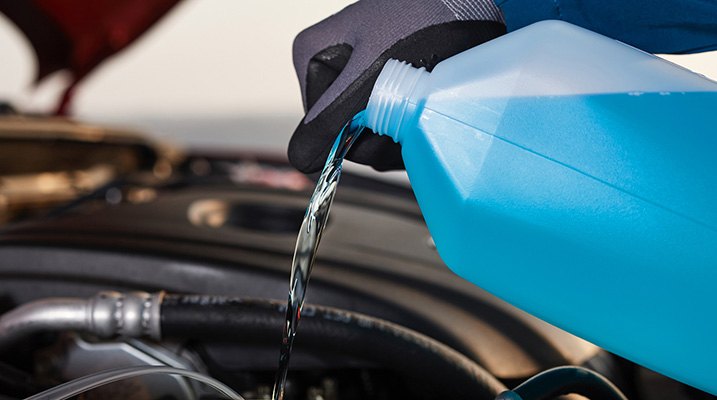
Everyone knows that your vehicle's engine needs its oil and filter changed at regular intervals. Most folks also know that there are other items which need regular servicing and replacement, such as the air and fuel filters. But what about the cooling system? The fact is, a modern vehicle's cooling system does such a great job at preventing an engine from overheating that we all but ignore it. The reality is, all vehicle manufacturers have a recommended interval when the coolant should be replaced.
The good news is that this is a maintenance task which the confident do-it-yourselfer can accomplish at home. Just like any other job, you'll need to own (or have access to) some common hand tools and shop supplies. Eye protection and disposable gloves are always good ideas. You will also be dealing with a hazardous chemical (the used coolant) which must be disposed of properly! A further concern is that antifreeze is "sweet tasting" to animals, but harmful and potentially fatal to them if they drink it. Do NOT flush old coolant down the drain or into the ground! If you perform this job at home, be sure to check with local authorities and follow the proper method to dispose of the used antifreeze.
As a first step, you'll need three very important pieces of information from your vehicle manufacturer:
- What is the coolant replacement interval?
- What is the total capacity of my vehicle's cooling system?
- What specific type of antifreeze should I use in my car?
This info may be in the owner's manual or on the expansion tank. You may need to call the manufacturer's Customer Service Department.

NOTE that at least in theory, you should purchase enough coolant and distilled water in a 50/50 ratio to equal the system's capacity. However, you almost never drain 100% of the old coolant out. Be sure to have enough, with the understanding that you will likely have some mixture remaining.
If it's time for a change, take off the radiator and/or expansion tank cap and examine the coolant (WARNING: do this only on a cold engine). The coolant, whether it's green, orange, or blue, should have a consistent color. It should not appear to be rusty, or have particles floating in it, or look like chocolate milk. If it does, you may have other mechanical issues which will not be addressed by a simple coolant replacement.
We're also presuming that your engine does not run hot, and that you have no obvious coolant leaks. Mechanical defects should be remedied before performing a straightforward coolant change.


This is a list of items you'll need:
1. The correct coolant, equal to 50% of total capacity, plus any desired additives.
2. Distilled (not tap) water, equal to 50% of total capacity
3. Drain pan, rags, and empty containers for used coolant
4. Screwdrivers and if needed, hose clamp tools

Depending on the vehicle's age and mileage, it is considered a best practice to replace the following items while the coolant is drained:
5. Radiator and heater hoses with their clamps:
6. Thermostat and gasket
7. Caps for the radiator and overflow tank



To perform the coolant replacement:
- Operate the vehicle with the heater fully on, and leave it on. Park the vehicle in a well-lit service area, and allow the engine to completely cool (minimum 4 hours).
- Remove all radiator caps to help allow coolant to drain.
- Drain the radiator into a drain pan, either through a petcock in the bottom of the radiator, or by removing the lower radiator hose. On some vehicles, there may be additional drains in the engine block.
- Bottle and correctly dispose of the used coolant.
- If the vehicle age and/or visual inspection require it, replace both upper and lower radiator hoses, heater hoses, hose clamps, thermostat, and thermostat gasket while the system is empty.
- Refill the cooling system with 50/50 mixture of the correct antifreeze for your vehicle combined with distilled water.
- Start and run the engine with radiator cap off, which helps bleed any trapped air from the system (note that some engines have separate coolant bleeder valves; check the service literature for your vehicle).
- Run the engine until the upper radiator hose is warm, which means the thermostat has opened. Shut off the engine and allow it to cool down.
- Add additional coolant as needed until the system is full. Reinstall the radiator/overflow bottle caps, and test drive the car. Watch the temperature gauge, and check for leaks.
- Clean and put away your tools. Be sure to record the date and mileage you performed this service, and be proud of completing a job well done!
